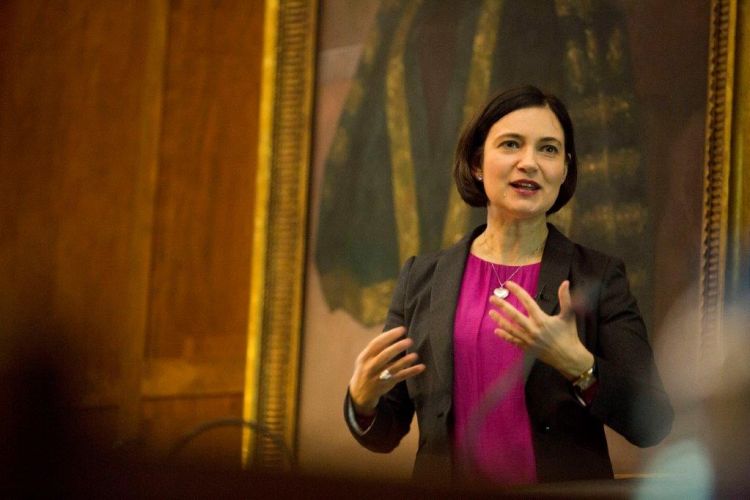Professor Emilia Jamroziak presents keynote lecture in Japan

Professor Emilia Jamroziak has travelled to Japan to present a keynote lecture entitled ‘Cistercians as a Network: Monastic Identity and the Transfer of Objects’.
The lecture was part of a conference entitled ‘Religion and Media in Pre-Modern East and West/Eurasia’, which took place at the end of November 2023.
It was co-organised by Associate Professor Toshio Ohnuki as a part of his project ‘Religious Movements and Communication: Medium, Worldview, and Social Integration’, funded by the Japan Society for the Promotion of Science (JSPS).
The project examines comparatively the creativity of pre-modern religious cultures in the Eurasian East and West (Europe and Japan).
The conference compared pre-modern Christian monasticism and Japanese Buddhism and Shintoism in the way they used different media to disseminate particular religious messages and create institutional memory and identity.
I am very honoured to have been invited to the conference. Professor Ohnuki and I are long-standing collaborators and I have already greatly benefitted from a fellowship of the JSPS in 2019 at the University of Okayama. One cannot substitute intensity and depth of conference discussion with any digital modes. I have also greatly enjoyed the discussions with the Japanese early-career researchers in Medieval Studies at a workshop following the conference and a visit to the Historiographical Institute (The University of Tokyo) as a guest of Prof Hiroki Kikuchi. The hospitality of Japanese academic culture is truly remarkable.
Professor Jamroziak’s lecture was entitled ‘Cistercians as a Network: Monastic Identity and the Transfer of Objects’. Click here for the full abstract.
Among institutional structures of the medieval church, the Cistercian order is one of the most studied phenomena of a network that spanned not only large geographical areas across linguistic, political and other boundaries but also one that lasted for centuries.
The ability to adapt, expand and maintain connections between monasteries within the Cistercian network has been the subject of much scholarly attention.
Monastic networks are also the key to understanding how knowledge, ideas and language travelled. This has been particularly intensely explored in relation to the “frontiers” or “peripheries” of medieval Europe and has been incorporated into various narratives of the expansion of Europe and processes of occidentalization.
Historically, such narratives treated monastic institutions as passive objects in the hands of political actors and tended to be highly influenced by confessional perspectives, too. However, the gradual retreat from the national history paradigms since the second half of the 20th century enabled not just to reclaim the agency of monastic institutions but also to problematise the cultural transfer as a far more complex process.
It is also vital to stress that objects such as manuscripts, incunabula, liturgical and cult objects travelled extensively in all directions across a monastic network. They are very important evidence for the collective identity creation and the media that were the key vehicles to sustain it for centuries.
Read more about Professor Jamroziak’s work on her staff research profile.
You can also read more about her recent work, 'Sacred Landscapes of Medieval Monasteries,' on the project webpage.



